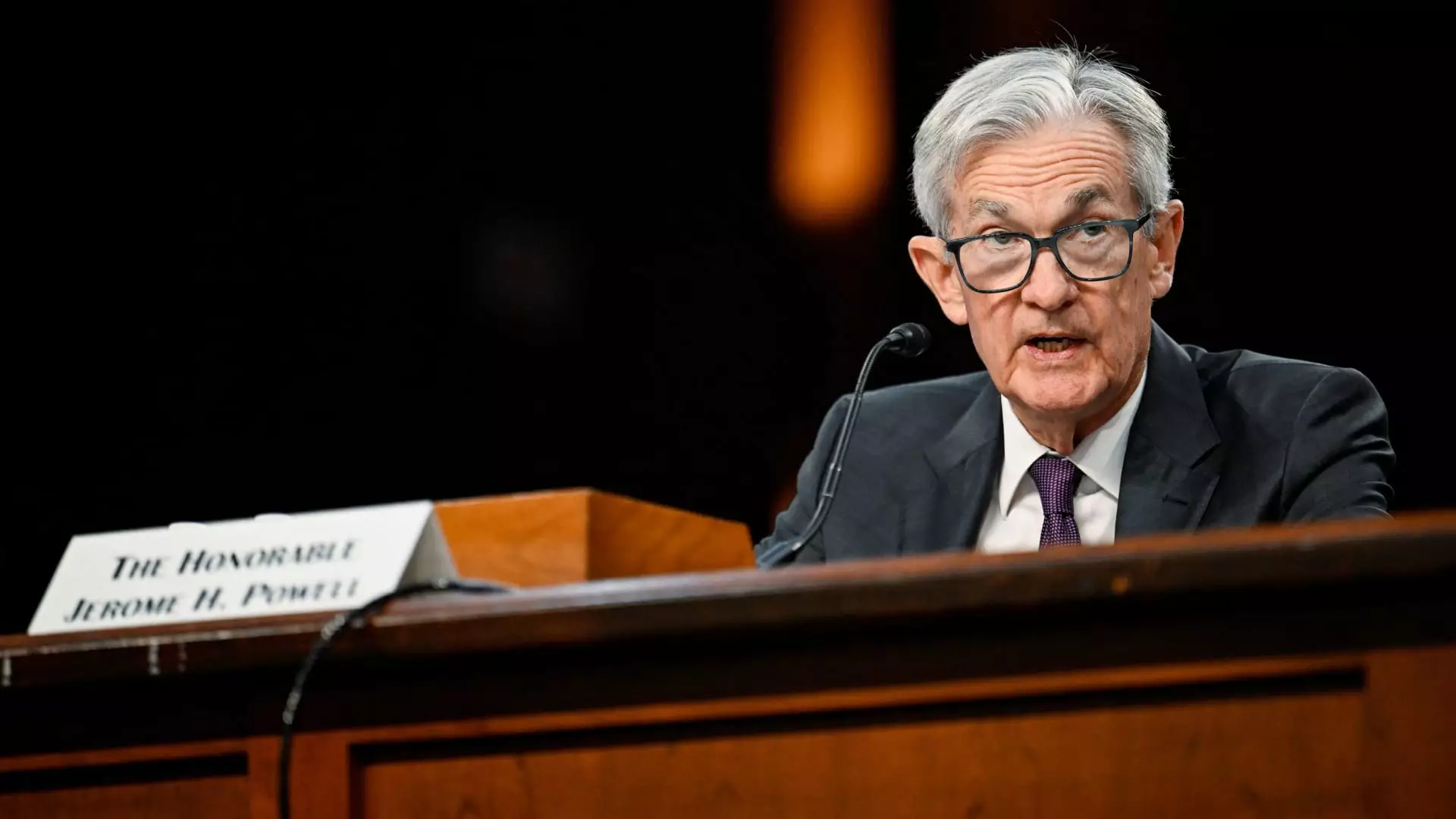As Federal Reserve policymakers grapple with a tumultuous economic landscape, a prevalent narrative paints the central bank as “well-positioned” to tackle any impending risks. Yet, a deeper analysis suggests that the Fed may be entrenched in a neutral stance, with limited flexibility to react decisively amidst a haze of uncertainties. The backdrop of an evolving economic environment, characterized by unpredictable trade policies and regulatory changes, has compelled the Fed to adopt a more cautious approach.
In a recent blog post, Atlanta Fed President Raphael Bostic articulated this sentiment, reflecting on the mixed messages banks are receiving regarding potential shifts in tax and regulatory frameworks. While there is optimism in the air, the mounting fears surrounding trade and immigration policies introduce significant complexity to monetary policymaking. Bostic’s assertion that “uncertainty” permeates the current landscape resonates with those observing the Fed’s consistent deliberation over its policy stance.
The dynamics of “Fedspeak” have dominated conversations in recent weeks, with officials articulating their views on the critical factors influencing monetary policy. The frequency of meetings among policymakers reveals an ongoing state of vigilance against the backdrop of President Trump’s aggressive trade policies. The minutes from the latest Federal Open Market Committee (FOMC) meeting underscore this cautious approach, highlighting a reality filled with “elevated uncertainty” regarding the impacts of potential changes in trade, immigration, and regulatory policies.
For the central bank, the consideration of uncertainty is twofold: it shapes the employment landscape and affects inflation trajectories. While employment numbers have remained stable, inflation has become a double-edged sword—showing signs of easing yet potentially rising again due to tariffs and external market pressures. The Fed’s long-standing goal of maintaining inflation at around 2% has proven elusive, keeping policymakers on high alert.
St. Louis Fed President Alberto Musalem articulated his concerns regarding inflation during a recent address, stating that risks of inflation surpassing the target remain significant. His baseline scenario reflects a belief that inflation could converge toward the 2% goal, but only if monetary policies maintain a mildly restrictive stance. Such a perspective underscores the balancing act the Fed must perform as it navigates between stimulating growth while curbing inflation.
Musalem’s reference to a “modestly restrictive” monetary policy indicates a fed funds rate currently hovering between 4.25%-4.5%. While acknowledging the importance of being vigilant, Bostic echoed similar calls for caution. He affirmed that policymakers must remain alert to potential threats that could destabilize price stability.
In contrast, Chicago Fed President Austan Goolsbee’s comments painted a more tempered picture regarding tariffs, suggesting that their potential impact hinges on various factors, such as their magnitude and the number of countries involved. This variety in interpretations among Fed leaders reflects the complexity of the current economic environment while demonstrating caution in suggesting future interest rate adjustments.
The Fed’s unease extends beyond trade tariffs and inflation. Recent minutes indicated acute awareness of substantial risks to financial stability, notably concerning leverage and the accumulation of long-term debt in the banking sector. Concerns voiced by economists like Mark Zandi signal broader worries regarding the integrity of the U.S. bond market, which he describes as fragile.
Zandi warned of the potential for a significant sell-off in the bond market in the coming year—a sentiment not commonly echoed by an economist of his standing. He pointed to systemic vulnerabilities in the market’s structure, suggesting that many underpinnings of economic stability are compromised and the Fed’s capacity to cut rates is severely limited under current conditions. Even as market predictions signal a possible reduction in rates, such expectations might be overly optimistic given the external pressures surrounding monetary policy.
As the Federal Reserve continues to face a myriad of challenges in its monetary policy framework, it finds itself at a crossroads. The interplay between inflation, trade uncertainties, and financial stability is shaping a landscape where clear guidance and decisive action remain elusive. Policymakers are aware of the potential repercussions should they misjudge the economic currents that lie ahead, emphasizing the need for adaptability and prudence in their decision-making processes.
As 2025 unfolds, the Fed stands poised to respond to evolving dynamics in the economy. While the institution entered this period on relatively stable footing, its ability to maintain that stability amidst lingering uncertainties will ultimately determine the trajectory of both economic growth and financial market confidence. In this intricate dance of policymaking, the Fed’s next moves will have profound implications for households and businesses alike, highlighting the importance of a responsive and attuned central banking strategy.

